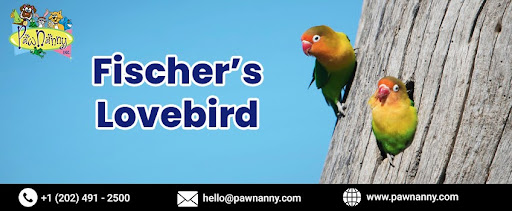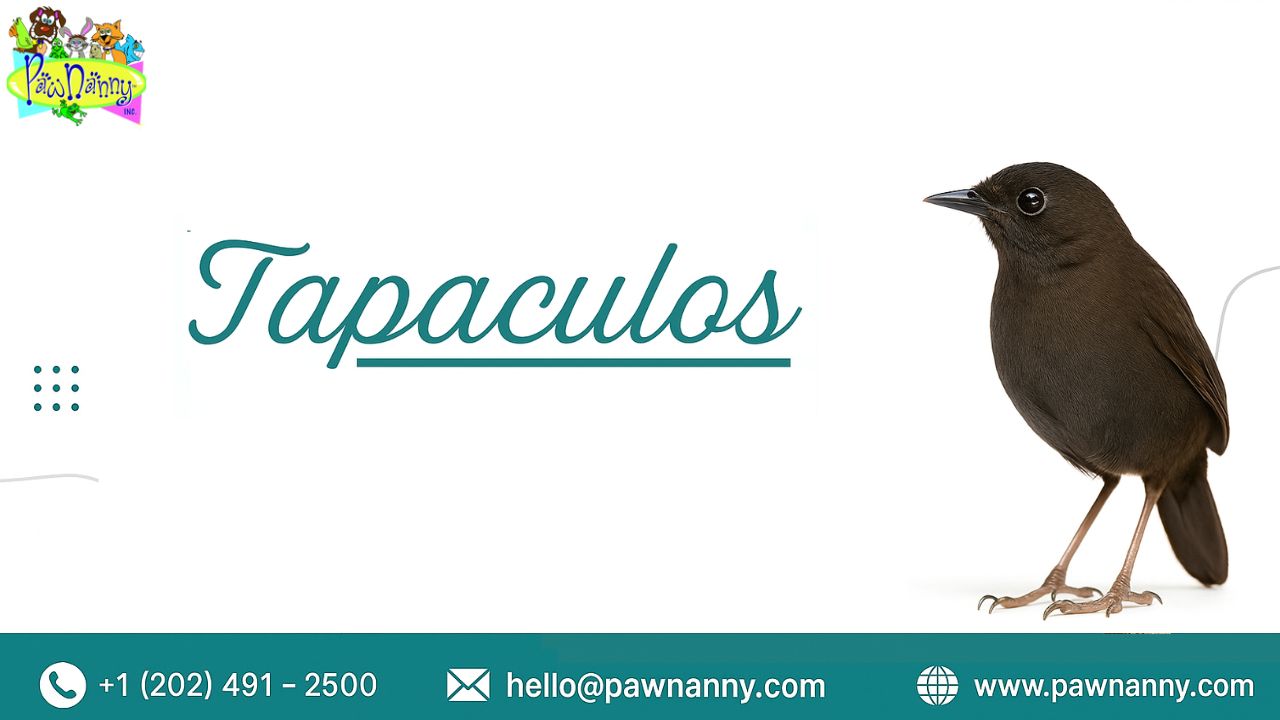
Fischer’s Lovebird
Scientific Name: Agapornis fischeri
Flock Members: Up to 10 members
Size: 5.5-6 inches
Weight: 1.4-1.8 ounces
Lifespan: 15-20 years
A.K.A.: Yellow-colored Lovebirds
Behavior
Fischer's Lovebirds display a range of interesting and engaging behaviors that make them a popular choice among bird enthusiasts. Fischer's Lovebirds are highly social creatures and form strong pair bonds. They thrive in the company of their mate and other lovebirds. These birds often live in small flocks, engaging in activities such as preening each other's feathers, sharing food, and vocalizing. They communicate through various calls and chirps, which help maintain contact within the flock and strengthen their social connections. Fischer's Lovebirds are known for their playful behavior. They exhibit a range of energetic and acrobatic movements, such as hanging upside down from perches, hopping, and climbing. They enjoy playing with toys, exploring their surroundings, and engaging in games with their mates or other lovebirds in the flock. Their playful nature provides both physical and mental stimulation, contributing to their overall well-being, even during Pets Care Services.
Fischer's Lovebirds are monogamous and form strong pair bonds. Once paired, they engage in courtship rituals, including mutual preening, regurgitating food to each other, and engaging in beak-to-beak feeding. These behaviors help strengthen their bond and establish a sense of trust and companionship. Fischer's Lovebirds are cavity nesters, meaning they seek out small hollows or cavities, such as tree hollows or nest boxes, for nesting. The pair works together to prepare the nest by collecting nesting materials, such as twigs and leaves, and lining it with softer materials like grass and feathers. The female typically lays a clutch of three to six eggs, and both parents take turns incubating the eggs and caring for the hatchlings.
History
The history of Fischer's Lovebirds, scientifically known as Agapornis fischeri, can be traced back to their native habitat in the central parts of Africa, specifically in Tanzania and the northern regions of Zambia. These small parrots were named after Gustav Fischer, a German explorer and collector who first described them in the late 19th century. Fischer's Lovebirds were initially discovered in the late 1800s and became popular among aviculturists and bird enthusiasts in the early 20th century. Their vibrant plumage, playful nature, and charming personality quickly captured the attention of bird lovers around the world.
During the mid-20th century, these lovebirds were primarily imported from their native range to meet the rising demand in the pet trade. However, due to the increase in captive breeding programs, Fischer's Lovebirds are now predominantly bred in captivity. This shift has helped reduce the impact on wild populations and has contributed to the availability of captive-bred individuals as pets. The popularity of Fischer's Lovebirds as pets can be attributed to their small size, captivating colors, and their ability to form strong bonds with their human caretakers. Their playful and affectionate nature makes them beloved companions and cherished additions to many households.
Today, Fischer's Lovebirds are widely kept as pets worldwide, and several color mutations have been selectively bred, including albino, lutino, and pied variations. Their popularity as pets continues to grow due to their charming personalities, ease of care, and their ability to adapt well to captivity and are calm during care services for pets.
Breeding
Breeding Fischer's Lovebirds can be a rewarding experience for aviculturists and bird enthusiasts. Fischer's Lovebirds reach sexual maturity at around 10 to 12 months of age. Once they have reached maturity, they start to display courtship behaviors and actively seek a mate. Lovebirds are monogamous birds, and once paired, they form strong and lifelong bonds. These birds are cavity nesters, which means they prefer nesting in small hollows or cavities. In captivity, they readily accept nest boxes. The pair works together to prepare the nest by collecting nesting materials such as twigs, leaves, and soft grasses. They use these materials to construct a cozy and secure nest.
The female lovebird typically lays a clutch of three to six eggs, with an average of four or five. The eggs are laid at intervals of approximately 48 hours. Both the male and female take turns incubating the eggs, with each partner incubating for several hours at a time. The incubation period lasts about 23 to 25 days. Once the eggs hatch, both parents actively participate in the care of the hatchlings. They take turns feeding the chicks by regurgitating food for them. The parents also diligently clean the nest and remove any waste to maintain a hygienic environment for the chicks. The chicks grow rapidly and develop their feathers within a few weeks.
The fledging period for Fischer's Lovebirds occurs around six to seven weeks after hatching. At this stage, the young birds leave the nest and begin exploring their surroundings. While they may still rely on their parents for food initially, they gradually become more independent and learn to feed on their own.
Food & Nutrition
The proper diet and nutrition are crucial for the health and well-being of Fischer's Lovebirds. A high-quality seed mix formulated specifically for small parrots should be the foundation of their diet. The mix should include a variety of seeds such as millet, canary grass seeds, and small sunflower seeds. Avoid seed mixes with large sunflower seeds as they are high in fat. Pelleted bird food can be introduced as a part of their diet to provide a balanced nutritional profile. Look for pellets specifically designed for lovebirds. Pellets offer a range of nutrients, vitamins, and minerals, and can help ensure a more balanced diet.
Fischer's Lovebirds should be offered a variety of fresh fruits and vegetables daily. These include leafy greens like spinach and kale, carrots, bell peppers, cucumbers, and fruits like apples, berries, and melons. Ensure that the fruits and vegetables are thoroughly washed and cut into small, bite-sized pieces. Calcium supplementation is essential for Fischer's Lovebirds, especially during breeding periods. Provide a cuttlebone or mineral block in their cage, which they can chew on to fulfill their calcium requirements. Vitamin supplements can also be provided, but it's important to consult a veterinarian for guidance on appropriate dosage and frequency.
Treats should be given sparingly and in small portions. These can include small amounts of nuts, seeds, or dried fruits. Remember that treats should not make up a significant portion of their diet and should be offered in moderation. Clean, fresh water should be available to Fischer's Lovebirds at all times. Ensure that the water dish is cleaned and refilled daily to maintain hygiene.
Conclusion
Fischer's Lovebirds are popular choices as pets due to their small size, colorful plumage, and playful personalities. As pets, they are known for forming strong bonds with their owners and displaying affectionate behaviors. They require regular social interaction, mental stimulation, and a well-balanced diet to thrive in captivity. In the wild, Fischer's Lovebirds are native to central parts of Africa, primarily found in Tanzania and the northern regions of Zambia. They inhabit savannah woodlands and arid areas. In their natural habitat, they live in small flocks and exhibit social behaviors such as mutual preening, vocalizations, and playful interactions. They build nests in tree hollows and feed on a variety of seeds, fruits, and vegetation. Preservation of their natural habitats is crucial to ensuring their survival in the wild. For more information or to avail care services for pets in Fairfax VA, visit Pawnanny.com .










